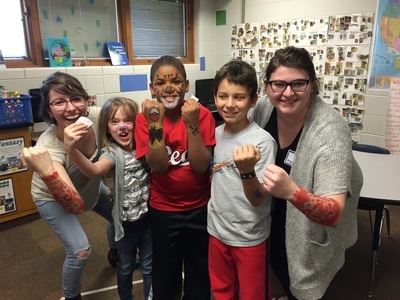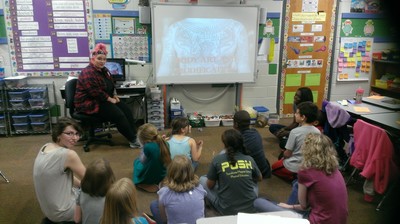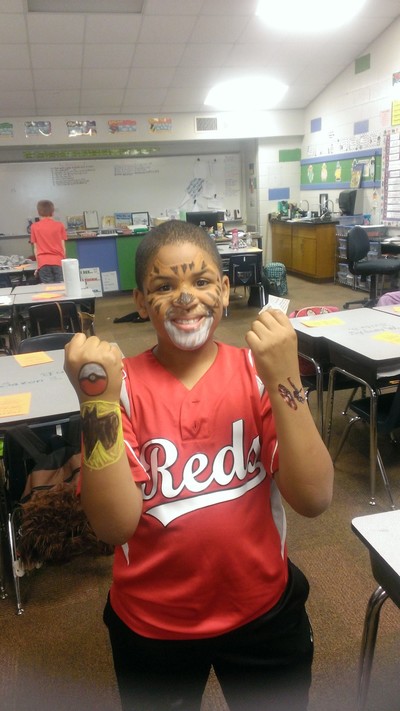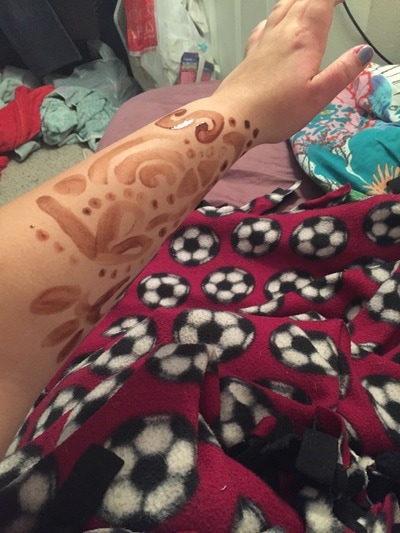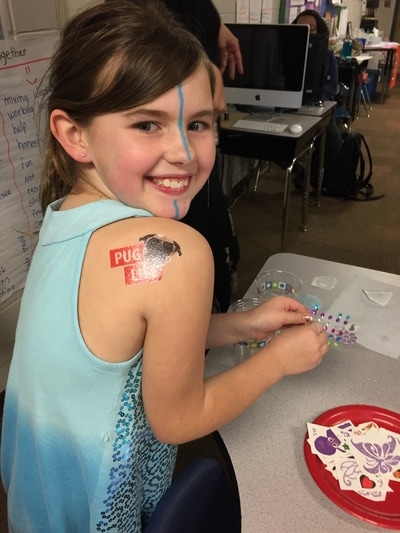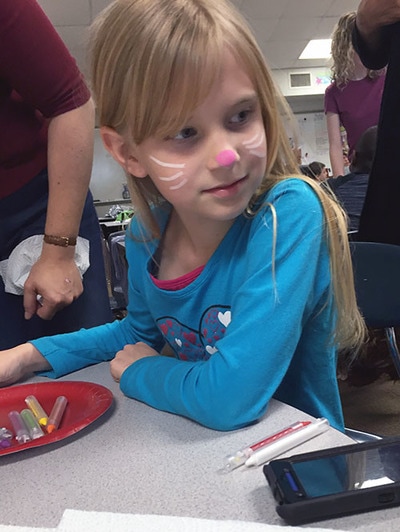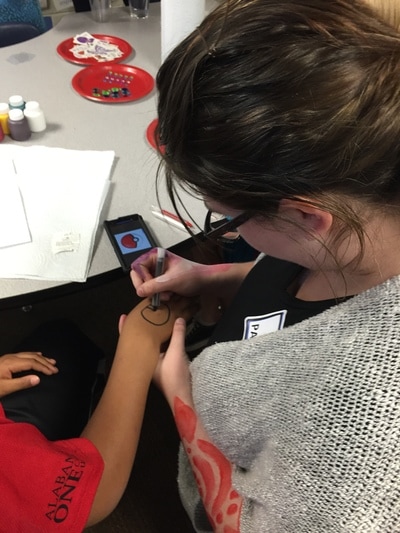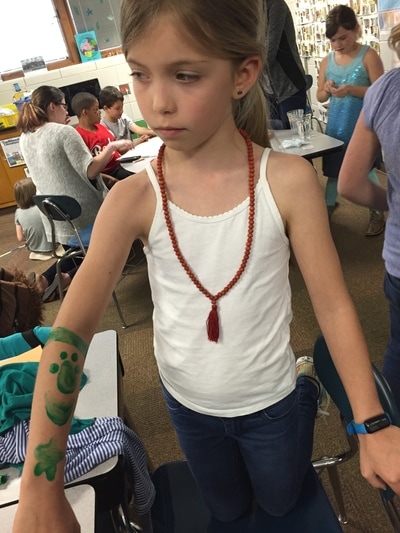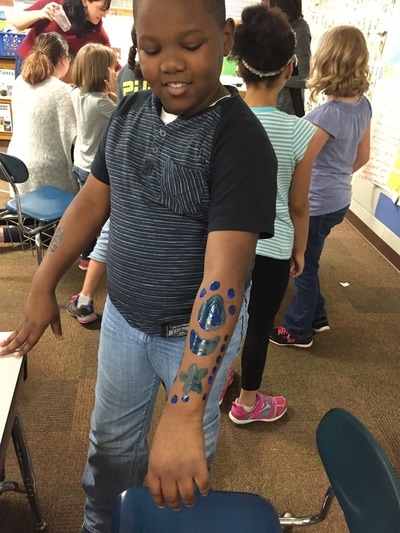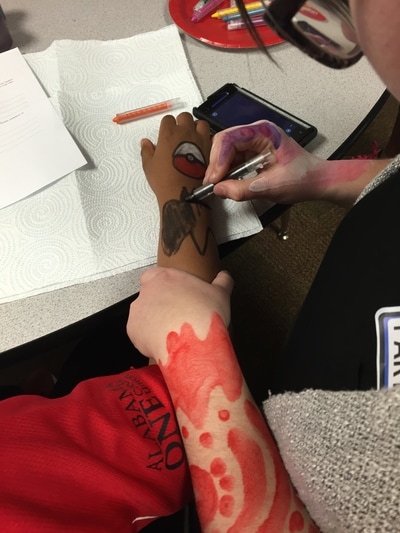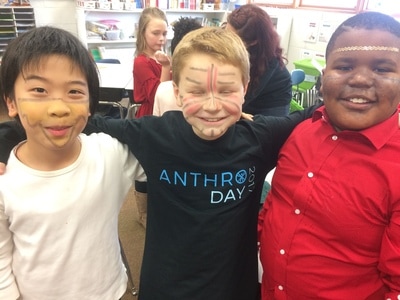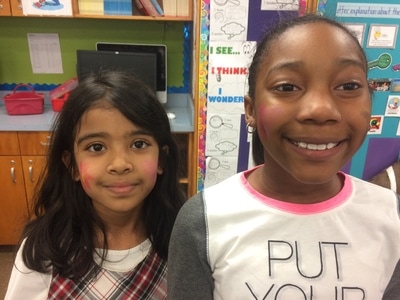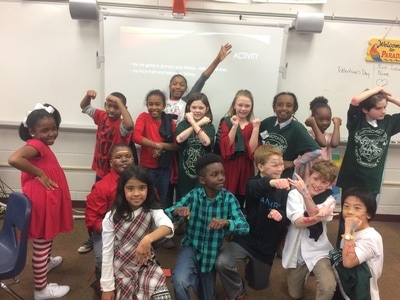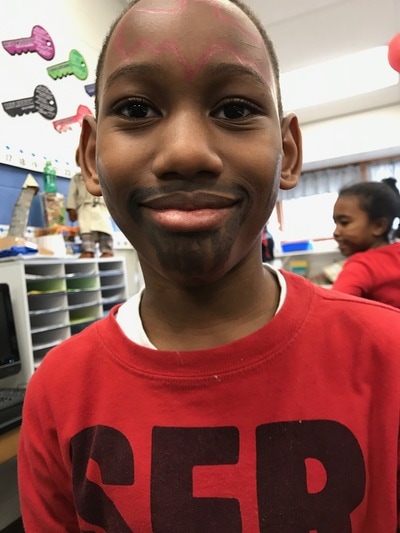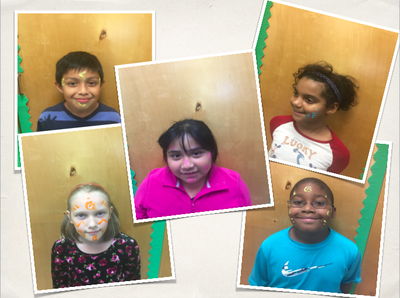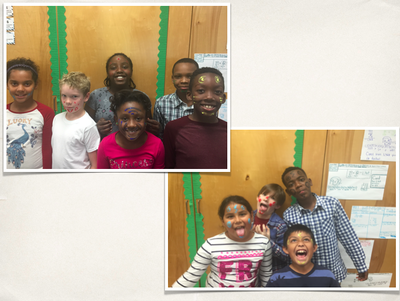Table of Contents
|
What is this lesson all about?
Body art and body modifications are expressions of cultural beliefs, and so the study of these fall under cultural anthropology. This is a great lesson to help review what ethnocentrism is. The students get really excited about this lesson. They get to draw tattoos and apply body paint. It's always a fun and creative day at the elementary school when we teach body art.
For our activity, we usually get temporary tattoos and washable, non-toxic paint from Walmart or Dollar General.
Why Is It Important to Study Body Art?
The world is a incomprehensibly large place, and people practice thousands of different cultures every day. When we encounter places that are vastly different from our own, they can be a little frightening if we're not prepared for it. Throughout history, we have tended to exoticize cultures that we're not familiar with, which can take away from their identity. No cultural idea is more important than another, which relates back to ethnocentrism. By celebrating the differences of people, cultural anthropologists are able to take away the mysticism of distant cultures. We hope that by sharing this information with children at a young age, we can put forth a positive energy about other peoples of the world.
For our activity, we usually get temporary tattoos and washable, non-toxic paint from Walmart or Dollar General.
Why Is It Important to Study Body Art?
The world is a incomprehensibly large place, and people practice thousands of different cultures every day. When we encounter places that are vastly different from our own, they can be a little frightening if we're not prepared for it. Throughout history, we have tended to exoticize cultures that we're not familiar with, which can take away from their identity. No cultural idea is more important than another, which relates back to ethnocentrism. By celebrating the differences of people, cultural anthropologists are able to take away the mysticism of distant cultures. We hope that by sharing this information with children at a young age, we can put forth a positive energy about other peoples of the world.
Seeing Culture Lesson Plan
by Kelsey Kennedy
Third Grade
Eight Sessions
Lesson: Seeing Culture
Materials:
Review:
Focus:
Objectives:
Guided Practice:
Review:
Summary:
Third Grade
Eight Sessions
Lesson: Seeing Culture
Materials:
- Washable, non-toxic paint
- Stickers
- Temporary Tattoos
Review:
- What is bipedal locomotion?
- What is cultural anthropology?
- What is ethnocentrism?
Focus:
- What are different forms of body art and modification?
- Why do we study this?
Objectives:
- This week students will learn the difference between body art and body modification
- body art: using your body as a medium for art
- body modification: any permanent change to the body
- How to avoid ethnocentrism when studying body modifications in different cultures.
- be kind
- Come up with their own clan body art
Guided Practice:
- Help students come up with examples of body art in their own culture, and body modifications. Identify if anyone in the room is using body art or modification
- Ie: jewelry, piercings, tattoos, hair color, clothing.
- Activity:
- Usually, the activities are independent but this one is a little more messy!
- Students will be applying temporary tattoos and body paint.
- Use clan symbols, colors, beliefs to inform their decisions.
- The teachers will help apply them.
Review:
- Body art and modification are an example of culture-they help people express their beliefs, rites of passage, and are a form of expression.
- Anthropologists try not to be ethnocentric when they study other cultures’ body modifications because they can be extremely different from their own.
- By studying other cultures this way, we can become more kind and understanding of other cultures that we might normally not relate to.
Summary:
- What designs did the groups come up with?
- Did they relate to their clans?
- Are any of the symbols the same?
Downloadable Content
|
| ||||||||||||||||||||||||||||||
For more information and our own insider perspective on teaching this lesson, check out our blog!
4. Gallery
Below is a gallery of pictures that show some of the examples over the years of body art lessons. At Tuscaloosa Magnet Elementary, we had the Alabama Panther clan, and they all got a blue paw-print on their arms to show their culture. See if you can pick out any other examples of clan identity in the gallery.


